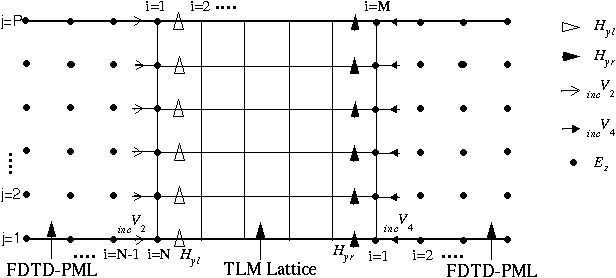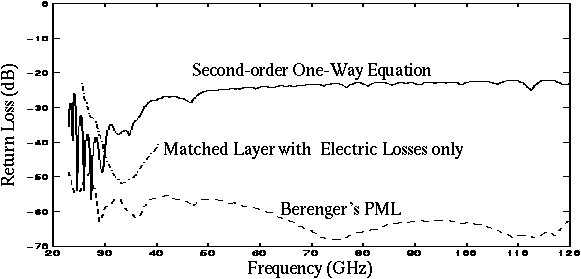
Channabasappa Eswarappa and Wolfgang J.R. Hoefer
Berenger's perfectly matched layer (PML) absorbing boundary condition is implemented for the first time in a TLM mesh. This is achieved through a special interface (explained in the previous page) between the FDTD-PMLs and the TLM lattice. Application to rectangular waveguides yields reflections less than -50 dB at frequencies up to six times the cutoff frequency. These absorbing boundary conditions are compared with one-way equation absorbing boundary conditions and with matched layers having only electric losses.
Further details can be found in
C. Eswarappa and W.J.R. Hoefer, "Implementation of Berenger Absorbing Boundary Conditions in TLM by interfacing FDTD Perfectly Matched Layers", Electronics Letters, vol. 31, no. 15, pp. 1264-1266, 20th July 1995

Discretization of a rectangular waveguide section with a shunt TLM mesh and two FDTD-PML meshes.

Comparison of return loss in the WR 28 waveguide for different Absorbing boundary conditions.